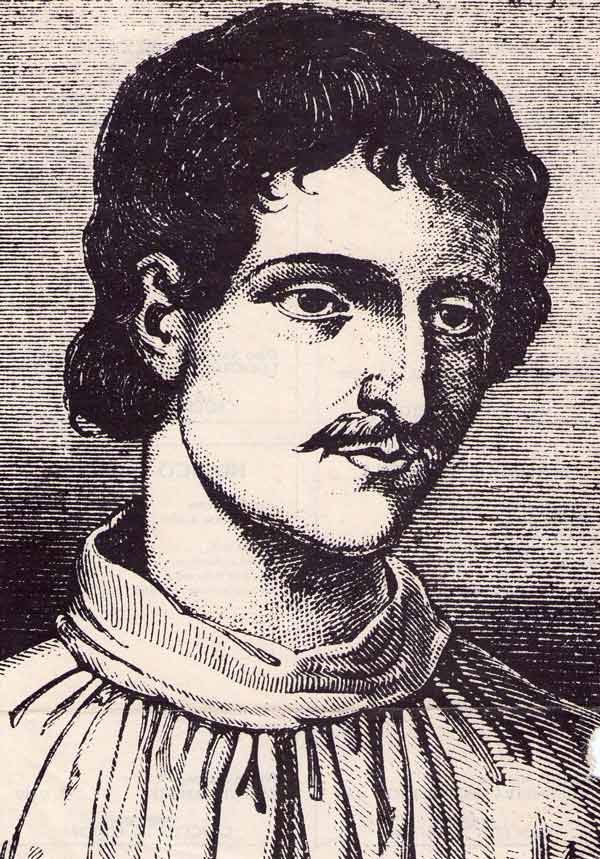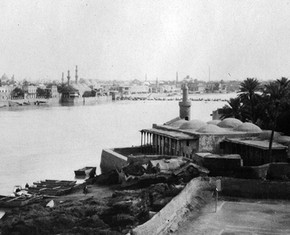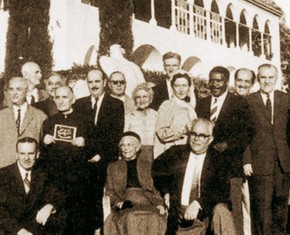The views expressed in our content reflect individual perspectives and do not represent the authoritative views of the Baha'i Faith.
In connection with his Copernican beliefs, he [Bruno] held also that the universe contains an infinite number of worlds populated by intelligent beings. On account of these teachings, Bruno was tried for heresy by the Inquisition and burned at the stake in 1600. He then became the first martyr of modern science at the hands of the Church, and thereby a precursor to Galileo…. The facts of this myth are true, though sketchy to the point of poverty and generally misleading in their emphasis. – Edward Gosselin and Lawrence Lerner, The Ash Wednesday Supper
As an astronomer, the philosopher and mathematician Giordano Bruno posited cosmological theories that went beyond the Copernican model to propose the idea that the Sun was just another star, and that, as there were other stars, there were likely also an infinite number of inhabited worlds populated by other intelligent beings.
He was right. Despite that, civil authorities in Italy burned Bruno at the stake in 1600. These two facts have combined into a powerful legend that, as Gosselin and Lerner put it in their book, Giordano Bruno “became the first martyr to modern science at the hands of the Church.”
One of the first concise statements linking these two facts appeared in the 1876 volume The Warfare of Science by Andrew Dickson White, who describes Bruno being “hunted from land to land” before turning on his pursuers and cursing them:
For this he is imprisoned for six years, then burned alive and his ashes scattered to the winds. Still, the new truth lived on; it could not be killed. Within ten years after the martyrdom of Bruno… the truth of the doctrine of Kopernik (Copernicus) was established by the telescope of Galileo.
A romantic and dramatic idea, but how much truth is in it? Was Bruno really martyred because he believed there was life on other planets, or that the Sun was a star among millions of others?
A summary of the proceedings of Bruno’s trial, rediscovered in 1940, lists the numerous charges against him. They included blasphemy, immorality, and heresy against church doctrine. Here’s a more comprehensive list, as cited in the court proceedings of the Roman Inquisition, according to which Bruno:
- held opinions contrary to Catholic doctrine and speaking against the faith and its ministers;
- held opinions contrary to Catholic doctrine on the Trinity, the divinity of Christ, and His Incarnation;
- held opinions contrary to Catholic doctrine pertaining to Jesus as Christ;
- held opinions contrary to Catholic doctrine on the virginity of Jesus’ mother, Mary;
- held opinions contrary to Catholic doctrine about both Transubstantiation and Mass;
- claimed the existence of a plurality of worlds;
- believed in metempsychosis and in the transmigration of the human soul into animals
- dealt in magics and divination.

Giordano Bruno
On that evidence alone, it’s tempting to call this myth busted. It’s also worth noting that, as historian William Bynum wrote, Bruno “died at the stake (though probably for his interest in magic rather than his devotion to plenitude).” Other scholars have rejected the “martyr to science” label, because they consider Bruno’s work unscientific. In any event, the only charge against him that can even be narrowly construed as scientific in nature is the existence of other worlds, and not so much because the worlds themselves existed, but because the inquisitors felt it suggested a plurality of gods. This led to the related charge that Bruno was a pantheist.
So, was Giordano Bruno burned at the stake for accepting Copernican theory?
Over and against all the commentary that insists he was, we have the record of his trial (and his own writings on such subjects as the Trinity and the transmigration of souls) to show that he was not. For nowhere in the documentation of his case is heliocentrism a factor. It wasn’t his “promotion” of the Sun to the center of the solar system that got Giordano Bruno executed in the Inquisition. Rather, it was his demotion of Christ and the human soul—neither of which, at the time, were considered to be within the realm of science.
So, as deplorable as such executions were, they did not always pit science against religion, as many modern thinkers would have us believe. Today, we’re finally beginning to understand that science and religion can function together, rather than inhabiting entirely different spheres of influence:
The learned men, that have fixed at several thousand years the life of this earth, have failed, throughout the long period of their observation, to consider either the number or the age of the other planets. Consider, moreover, the manifold divergencies that have resulted from the theories propounded by these men. Know thou that every fixed star hath its own planets, and every planet its own creatures, whose number no man can compute. – Baha’u’llah, Gleanings from the Writings of Baha’u’llah, p. 163.
Next: Galileo Goes to Jail—or Does He?
















Comments
Sign in or create an account
Continue with Googleor